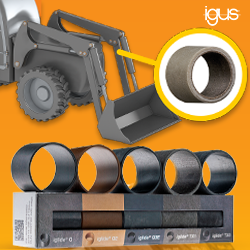Opto Diode's New Radiation
Hard Photodiodes for Electron Detection - UVG20C
October 8, 2013 - Newbury Park, CA - Opto Diode (www.optodiode.com), a division of ITW, and a member of the ITW Photonics Group, introduces the 20 mm2 photodiode with a circular active area that is ideal for electron detection. The new device offers 100 percent internal quantum efficiency (QE) and unparalleled stability.
The absence of a surface dead region results in 100 percent collection efficiency. The radiation-hard, junction-passivating, oxynitride protective entrance window makes the device extremely stable even after exposure to intense flux of UV photons (showing less than 2 percent responsivity degradation after megajoules/cm2 of 254 nm and tens of kilojoules/cm2 of 193 nm photon exposure). The exceptional radiation-hardness makes these diodes much better suited than conventional silicon photodiodes for space missions and/or satellite applications.
The new device features a rise time of 1.7 µsec (typical), a minimum rise time of 0.8 µsec, and a maximum of 3.3 µsec. The shunt resistance is 200 MOhms (typical), 50 MOhms (minimum), and the typical capacitance is 4 nanofarads (nF), maximum is 10 nF. Housed in a TO-8 package, the UVG20C offers peak responsivity of 800nm at approx. 0.56 A/W.
Opto Diode's UVG20C absolute devices' thermal parameters offer storage temperatures ranging from -20 degrees C to 100 degrees C; operating temperatures range from -20 degrees C to 80 degrees C. The maximum junction temperature is 100 degrees C and the lead soldering temperature (1 /16 in. from the case for 10 seconds) is 240 degrees C. The new radiation-hard photodiodes for electron detection are available for shipping now. For more information, please visit: http://optodiode.com/pdf/UVG20C.pdf.
Opto Diode Corporation (www.optodiode.com) based in Newbury Park, California, is a member of the ITW Photonics Group, delivering high-performance, standard and custom photodetectors, and reliable, high quality, standard and custom infrared and visible LEDs. The company, with the recent acquisition of International Radiation Detectors, also designs and manufactures semiconductor radiation devices that detect photons in the UV range, X-rays, and other high energy particles. The domestic U. S. manufacturing plant includes a wafer fab and ensures delivery of volume quantities at competitive prices with short lead times. Opto Diode's rigorous quality control standards meet their customer's strictest requirements in a variety of industries, including test & measurement, biotechnology, medical, entertainment, military/defense, industrial, aerospace, automotive, R&D and more.
About ITW Photonics Group: ITW, a diversified manufacturer of advanced industrial technology, has brought together three of its photonics business units to form the ITW Photonics Group. The ITW Photonics Group was created to bring together and build on the technical expertise of three individual companies that specialize in photonics technology and span the full spectrum of wavelengths. The group consists of Lumex (LED and LCD technology, headquarters in Palatine, IL and Taiwan), Cal Sensors (IR detector and emitter technology, based in Santa Rosa, CA) and Opto Diode (LED, silicon photodiodes and electro-optical assembly technology, based in Newbury Park, CA).
The synergy of these industry frontrunners provides an unsurpassed range of photonic capabilities within a broad spectrum of markets, including medical, military and industrial controls. The ITW Photonics Group provides integrated solutions that encompass the technology and experience from all three business units, offering design engineers higher product performance with greater feature enhancements. For more information on the ITW Photonics Group, log onto www.itwphotonicsgroup.com.
Featured Product

igus - triflex R robot dresspacks
Properly managed cables on a multi-axis robot are the difference between successful, failure-free operation and frequent unplanned downtime and lost profits. Discover how triflex® robot dresspacks are designed to protect cables in multi-axis motion - extending cable life, minimizing costs, and reducing unplanned downtime.
